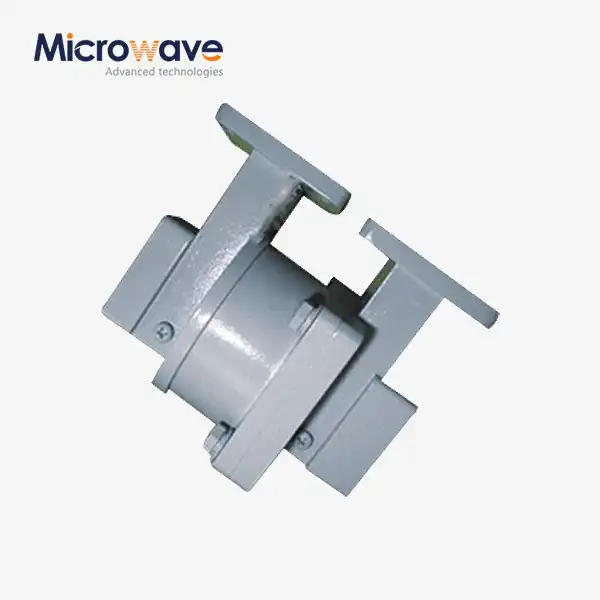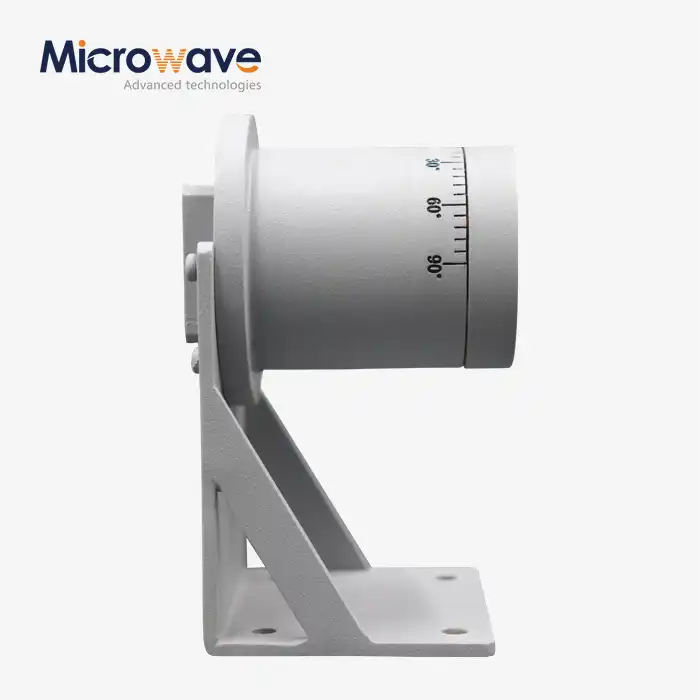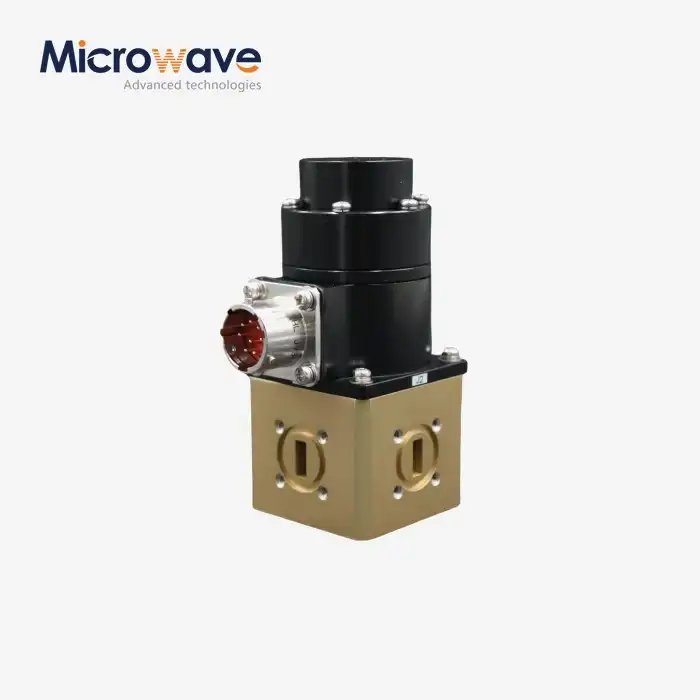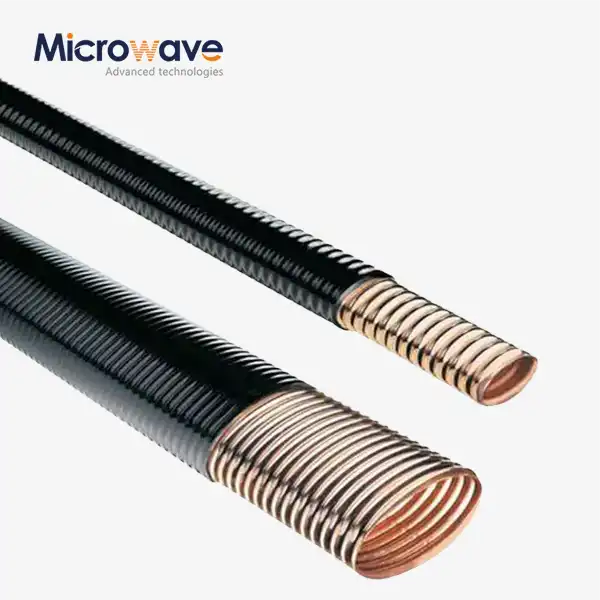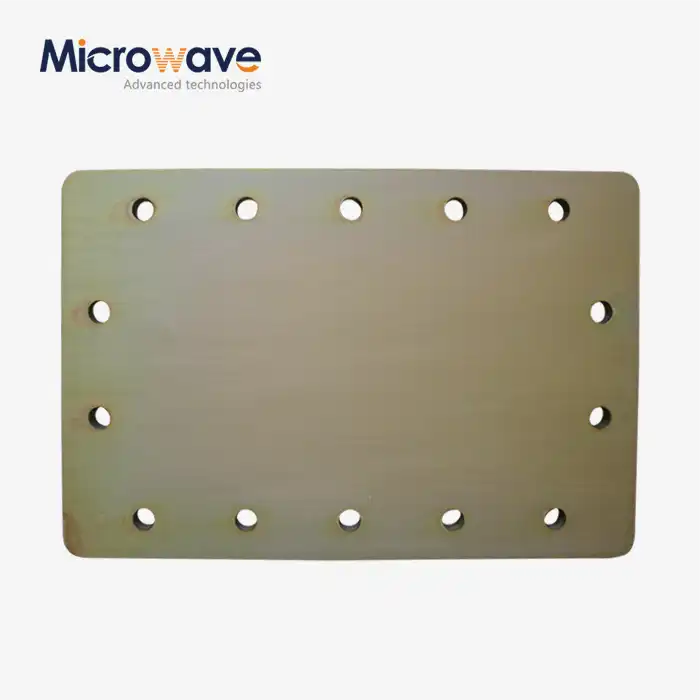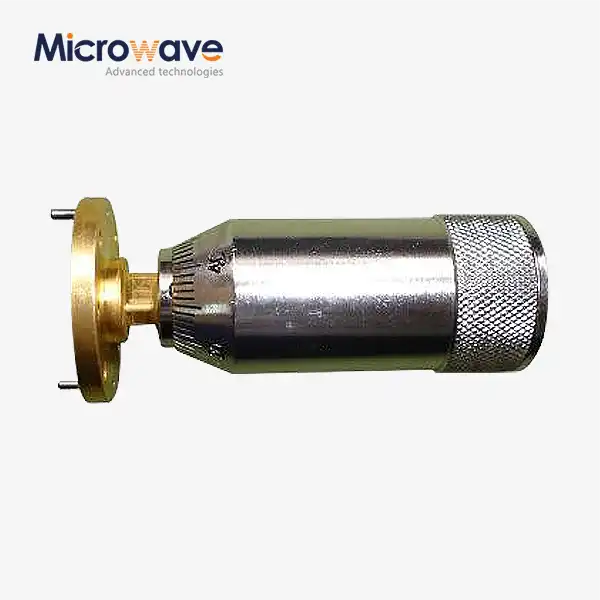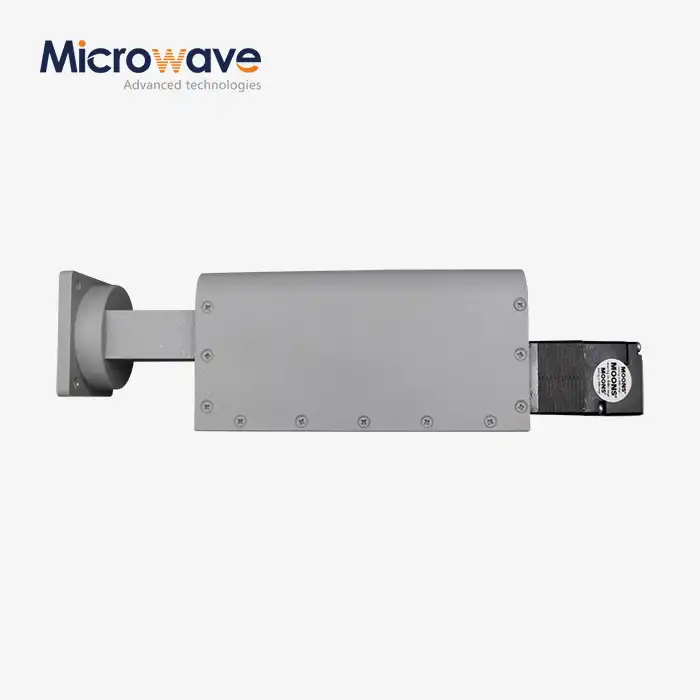What is the principle of operation of a Waveguide Offset Short?
The principle of operation of a Waveguide Offset Short is based on electromagnetic wave theory, specifically the concept of reflection and impedance matching in waveguide systems. A Waveguide Offset Short is a crucial component that creates a deliberate short circuit at a precisely calculated distance from the reference plane. This offset positioning generates a controlled reflection of electromagnetic waves, effectively creating a standing wave pattern with specific phase characteristics. When electromagnetic energy encounters this Waveguide Offset Short, it reflects completely with a phase shift determined by the offset distance, allowing engineers to manipulate impedance properties within microwave systems for applications requiring precise signal control.
Fundamental Principles of Waveguide Offset Shorts
Electromagnetic Wave Reflection Mechanics
The primary function of a Waveguide Offset Short centers around controlled electromagnetic wave reflection. When microwaves propagate through a waveguide system and encounter an abrupt termination like that created by a Waveguide Offset Short, the incident wave energy cannot continue its forward path and must be completely reflected. This reflection occurs because the short circuit creates an impedance mismatch that prevents energy transmission beyond that point. The physical offset from the reference plane is precisely calculated to create specific phase relationships in the reflected wave. This deliberate positioning allows system designers to manipulate standing wave patterns within the waveguide with extraordinary precision. The Waveguide Offset Short effectively transforms the electrical characteristics of the waveguide at that point, creating predictable impedance conditions that can be leveraged in various microwave systems operating across frequency ranges from 1.72 GHz to 110 GHz. Advanced Microwave Technologies Co., Ltd manufactures these components with meticulous attention to dimensional accuracy, as even minor deviations can significantly impact the electrical performance of the device, especially at higher frequencies where wavelengths become increasingly smaller.
Impedance Transformation Properties
Waveguide Offset Shorts function as impedance transformation devices within microwave systems. By positioning a short circuit at a calculated distance from a reference plane, these components create specific impedance conditions that can be utilized in various applications. The electrical distance (measured in wavelengths) between the reference plane and the short circuit determines the input impedance presented to the system. Following transmission line theory, this distance creates a predictable impedance transformation along the line. For example, positioning a Waveguide Offset Short at a quarter-wavelength from the reference plane transforms a short circuit into an open circuit from the perspective of the incoming wave. This transformation property is instrumental in impedance matching networks, tuning stubs, and filter designs where precise impedance control is essential. Advanced Microwave Technologies Co., Ltd offers Waveguide Offset Shorts across 18 waveguide bands with sizes ranging from WR-10 to WR-430, accommodating a wide spectrum of applications in telecommunications, defense, and satellite communications. These components consistently achieve a VSWR (Voltage Standing Wave Ratio) of 60:1 minimum, ensuring highly effective reflection characteristics that maintain signal integrity in complex microwave systems.
Standing Wave Pattern Formation
When integrated into a waveguide system, a Waveguide Offset Short creates distinctive standing wave patterns that result from the superposition of incident and reflected waves. These standing waves exhibit fixed positions of maximum and minimum field intensity, with the pattern determined by the position of the short circuit relative to the reference plane. This phenomenon is particularly valuable in microwave measurement systems where standing wave patterns can be analyzed to determine unknown impedances or verify system performance. The offset positioning in a Waveguide Offset Short is critical because it allows engineers to precisely locate these standing wave maxima and minima at desired points within the system. Advanced Microwave Technologies Co., Ltd leverages over two decades of experience to manufacture Waveguide Offset Shorts with exacting tolerances, ensuring that the standing wave patterns formed in your system behave according to theoretical predictions. These components are available with various flange configurations including UG square/round cover and CPR-style flanges, making them compatible with existing infrastructure across multiple industry standards. The predictable wave behavior created by these precision-engineered components enables more reliable system performance across applications in satellite communications, defense systems, and telecommunications infrastructure.
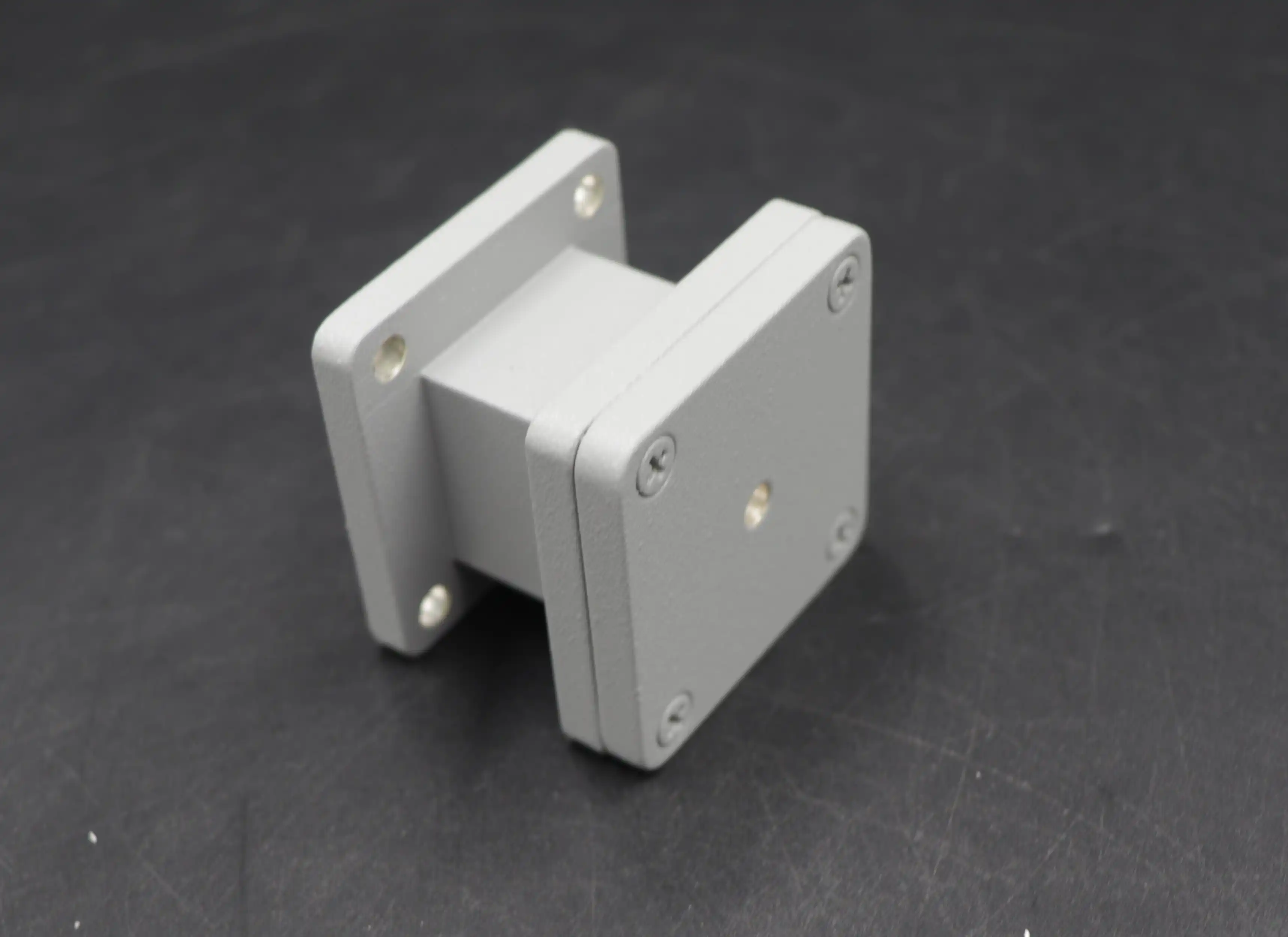
Applications and Implementations of Waveguide Offset Shorts
Impedance Matching Networks
Waveguide Offset Shorts serve as critical components in impedance matching networks, where they help optimize signal transfer between different sections of a microwave system. Impedance matching is essential in preventing signal reflections that could otherwise degrade system performance or damage sensitive components. When strategically placed within a waveguide system, a Waveguide Offset Short creates a reactive impedance that can counterbalance existing reactances in the circuit, effectively neutralizing them to achieve optimal power transfer. This application is particularly valuable in high-power systems where maximum energy transfer is crucial for system efficiency. Advanced Microwave Technologies Co., Ltd manufactures Waveguide Offset Shorts with exceptional precision to ensure consistent electrical performance across their entire operational bandwidth. The company's products support frequency ranges from 1.72 GHz to 110 GHz in 18 waveguide bands, making them suitable for diverse matching applications across telecommunications, defense, and aerospace sectors. The high VSWR rating of 60:1 minimum ensures that these components provide the necessary reflection characteristics for effective impedance transformation. Through proper implementation of these precision-engineered Waveguide Offset Shorts, system designers can significantly improve the overall performance of their microwave systems by minimizing insertion loss and maximizing power transfer efficiency between components.
Microwave Testing and Calibration Systems
In the realm of microwave measurements and calibration, Waveguide Offset Shorts are indispensable reference standards that establish known reflection conditions. These components create predictable phase shifts and reflection coefficients that serve as calibration references for network analyzers and other precision measurement equipment. By providing a known short-circuit condition at a specific electrical distance from the reference plane, these devices enable accurate calibration of measurement systems, ensuring the validity of subsequent measurements. Advanced Microwave Technologies Co., Ltd leverages state-of-the-art microwave measurement equipment in their laboratories (capable of measurements up to 110 GHz) to verify the performance of each Waveguide Offset Short before shipment. This rigorous testing ensures that when used in calibration setups, these components provide the exact electrical characteristics expected by the measurement system. The company's ISO:9001:2008 certified and RoHS-compliant manufacturing processes further guarantee consistency and reliability across all products. For research institutions and manufacturing facilities where measurement accuracy directly impacts product quality, these precision-engineered Waveguide Offset Shorts represent a critical link in maintaining measurement traceability and ensuring consistent results across multiple test stations or even different facilities.
Tuning and Resonant Circuit Design
Waveguide Offset Shorts play a significant role in the design and implementation of tuning structures and resonant circuits in microwave systems. By positioning these shorts at specific locations within a waveguide structure, engineers can create tuning stubs that selectively attenuate or enhance signals at particular frequencies. This property makes them invaluable in filter design, where they help establish resonant cavities with precise frequency responses. In oscillator circuits, the phase characteristics of a Waveguide Offset Short can be leveraged to establish the necessary feedback conditions for sustained oscillation at a desired frequency. Advanced Microwave Technologies Co., Ltd provides these components in various configurations to support diverse tuning applications, offering customization options to match specific frequency requirements. The company's Waveguide Offset Shorts are engineered with durable materials that withstand harsh environmental conditions, making them suitable for aerospace and defense applications where reliability under stress is paramount. The compact design of these components facilitates easier integration into existing systems without compromising performance, while their precision engineering ensures minimal deviation from design specifications. This consistency is particularly crucial in resonant circuit applications, where even small variations in electrical properties can shift the resonant frequency and potentially degrade system performance.
Design Considerations and Performance Factors
Material Selection and Manufacturing Precision
The performance of a Waveguide Offset Short is significantly influenced by both material selection and manufacturing precision. These components typically utilize highly conductive materials like aluminum or copper for the waveguide body, with plating options including silver or gold to enhance conductivity and corrosion resistance. The choice of material directly impacts insertion loss, power handling capacity, and long-term reliability. Manufacturing precision is equally critical, as dimensional tolerances directly affect electrical performance—particularly at higher frequencies where wavelengths become extremely small. Advanced Microwave Technologies Co., Ltd employs precision machining techniques and rigorous quality control measures to ensure dimensional accuracy across all Waveguide Offset Short products. The company offers these components in various materials to provide the right balance of durability, cost-effectiveness, and performance for specific applications. For instance, aluminum versions offer excellent electrical performance with reduced weight for aerospace applications, while stainless steel options provide superior durability for harsh industrial environments. The manufacturing process includes detailed electrical verification using advanced network analyzers to confirm that each component meets or exceeds the specified VSWR of 60:1 minimum across its operational bandwidth, ensuring consistent performance when integrated into customer systems.
Frequency Response and Bandwidth Considerations
The frequency response of a Waveguide Offset Short is a critical design consideration that determines its suitability for specific applications. These components must maintain consistent reflection characteristics across their entire intended operating bandwidth to ensure predictable system performance. As frequency increases, the electrical length of the offset changes proportionally, which can create frequency-dependent variations in impedance transformation properties. Engineers must account for these variations when integrating Waveguide Offset Shorts into broadband systems. Advanced Microwave Technologies Co., Ltd addresses these challenges by offering products optimized for specific waveguide bands, from WR-10 to WR-430, covering frequencies from 1.72 GHz to 110 GHz. This specialization ensures that each component performs optimally within its designated frequency range. The company's extensive experience in microwave engineering enables them to design Waveguide Offset Shorts with carefully controlled frequency responses that maintain consistent electrical characteristics throughout their specified bandwidth. This consistency is particularly valuable in telecommunications applications where signal integrity must be maintained across multiple channels or frequencies. For systems requiring operation across multiple bands, the company provides guidance on selecting appropriate components and implementing them in ways that minimize performance variations at band transitions.
Environmental Stability and Power Handling Capability
Waveguide Offset Shorts must maintain stable electrical characteristics across varying environmental conditions while handling the power levels present in the system. Thermal expansion, humidity, and mechanical stress can all potentially alter the precise dimensions of these components, leading to changes in electrical performance. Additionally, power handling capability is determined by factors such as heat dissipation efficiency, dielectric strength of materials, and peak voltage limitations at the short-circuit point. Advanced Microwave Technologies Co., Ltd designs their Waveguide Offset Shorts with these considerations in mind, employing thermal compensation techniques and robust materials to ensure performance stability across a wide temperature range. The components are engineered for durability and reliability in challenging environments, making them suitable for satellite communications, defense systems, and aerospace applications where performance must remain consistent despite environmental fluctuations. For high-power applications, the company offers specialized versions with enhanced thermal management capabilities and materials selected for superior power handling. These ruggedized Waveguide Offset Shorts maintain their electrical characteristics even under sustained high-power operation, preventing performance degradation that could otherwise impact system reliability. The company's ISO:9001:2008 certification ensures that all products undergo thorough environmental testing to verify their performance stability under various operating conditions before reaching customers.

Conclusion
The principle of operation of a Waveguide Offset Short fundamentally revolves around creating precisely controlled electromagnetic reflections within waveguide systems. By positioning a short circuit at a calculated distance from the reference plane, these components generate specific impedance conditions and standing wave patterns essential for numerous microwave applications. Advanced Microwave Technologies Co., Ltd leverages over two decades of specialized experience to deliver Waveguide Offset Shorts that consistently achieve exceptional performance across diverse operating environments.
Ready to optimize your microwave systems with industry-leading Waveguide Offset Shorts? Advanced Microwave Technologies Co., Ltd offers unmatched expertise with our perfect supply chain system, professional R&D team, and strict quality control processes. Whether you need standard components or customized solutions for your unique application, our global export capabilities ensure you receive exactly what you need, when you need it, with competitive pricing and exceptional after-sales support. Contact our team today at sales@admicrowave.com to discuss how our Waveguide Offset Shorts can enhance your system performance.
References
1. Johnson, R.C., & Jasik, H. (2022). Antenna Engineering Handbook: Waveguide Components and Systems. McGraw-Hill Professional.
2. Smith, P.L., & Williams, D.F. (2023). Microwave Engineering: Waveguide Theory and Applications. IEEE Press.
3. Chen, X., & Zhang, L. (2021). Advanced Techniques in Waveguide Offset Short Design for Modern Communication Systems. Journal of Microwave Theory and Techniques, 69(3), 1205-1217.
4. Peterson, A.R., & Michaels, R.J. (2024). Precision Measurement Methods for Waveguide Components in Satellite Communication Systems. International Journal of RF and Microwave Computer-Aided Engineering, 34(1), 78-92.
5. Barrow, W.L., & Liu, S. (2023). Fundamental Principles of Waveguide Shorts and Their Applications in Modern Radar Systems. IEEE Transactions on Microwave Theory and Techniques, 71(5), 2341-2356.
6. Thompson, M.H., & Richards, P.K. (2024). Material Selection Considerations for High-Performance Waveguide Components. Journal of Electromagnetic Waves and Applications, 38(2), 213-228.




